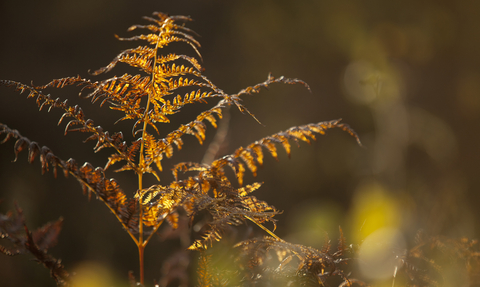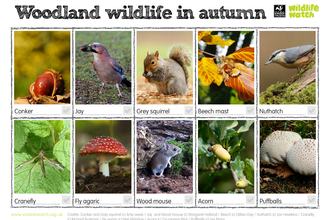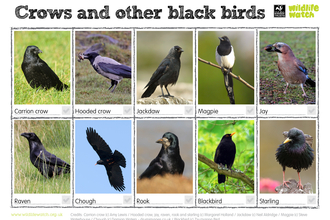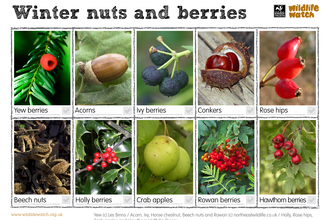
Autumn colours (c) Paul Hobson
Autumn
While the days begin to shorten and some plants start going dormant in preparation for the colder months, that doesn't mean that there isn't plenty to see in autumn! Hedgerows bustle with life as berries ripen, leaves start to change colour, fungi begin to flourish, and incredible migrations of birds, fish, and even insects take place.
From winter thrushes heading to our shores and deers start the rutting season, find out more about what wildlife is up to in autumn. Click the (i) icons to find the image credit, or on the images themselves to find out more about what that species is up to.
Animals, birds, amphibians and more!
Deer start to put on displays of strength and sound as rutting season starts, while foxes and badgers gorge on the autumnal feasts of berries and seeds. September is usually the last month to see hobbies and swallows before they head back to Africa, so keep a watchful eye on the sky!
What insects are active?
You may be surprised to learn that some butterflies can still be seen all the way into November!
For the plant and fungi enthusiasts
The changing seasons brings a burst of colour, not just from the changing leaves but also from the berries that ripen and the flurry of life this brings.
Spotter sheets
Heading out on a crisp autumnal walk? Why not take these spotter sheets and see which ones you can see.
6 reserves to see the changing colours of autumn
Looking to find the yellows of beech, the crimson of wild service trees, or the purples of heather? Check out the list below to find out more about 6 nature reserves that burst with colour this season.
Siccaridge woods
Siccaridge Wood has a canopy of ash, silver birch and beech, which turns from the deep green of late summer into shades of yellow, orange and golden brown. While dormice settle in to start hibernating, fungi like turkeytails and shaggy inkcaps flourish.
The Park and Poor's Allotment
The Park and Poor’s Allotment are two neighbouring reserves tucked away in the Forest of Dean, and the perfect place to find the purple shades of flowering heathers and an abundance of mosses and lichens.
Lower Woods
Lower Woods is one of the largest ancient woodlands in the south-west, and is home to ash, hazel, English oaks, and more. Keep an eye out for hazel nuts and the winged seeds of ash trees littering the woodland floor.
Swifts Hill
Swifts Hill boasts views across the Slad Valley, and on a clear day you can see as far as Wales! Autumn lady’s tresses flowers in late summer and into October, and is one of the 13 species of orchid that can be found here.
Collin Park Wood
The small-leaved limes and sessile oaks of Collin Park Wood turn shades of yellow and orange, while the wild service trees add a deep orange/crimson hue. Collin Park Wood is home to one of the highest concentrations of wild service trees in the county, which are now nationally rare.
Frith Wood
Frith Wood is an ancient beech woodland that can be found near Stroud, with some parts of the woodland dating back more than 1,000 years. Listen out for the drumming sound of great spotted woodpeckers while you take in the yellows of the beech leaves and the views across the Painswick Valley.























